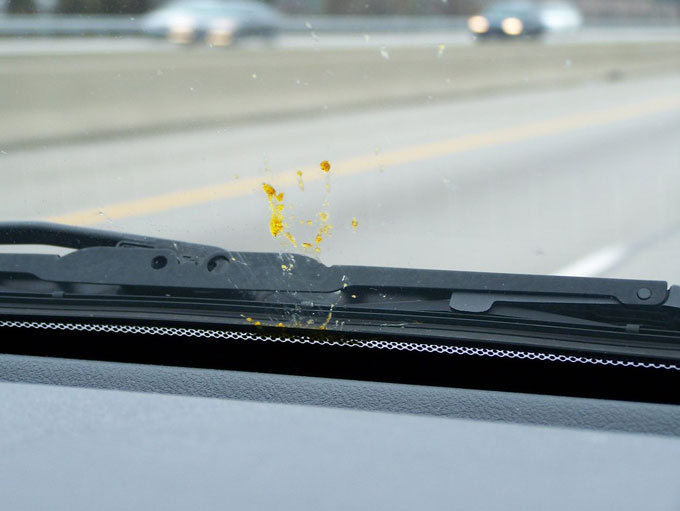These news articles and accessible scientific papers explain the latest findings on the 'insect apocalypse.'
Perhaps you remember when a drive in the country meant a windshield covered with the remains of many tiny insects. And you may have noticed that this is no longer always (or even usually) the case. Indeed, you can drive many interstate miles, even in rural areas, without having to clean your windshield to see properly.

(Photo credit: chapstickaddict / Flickr )
Are there really fewer insects than there used to be? Yes, in fact – a lot fewer. Is this drop-off an effect of a warming globe? Partly. We might call it one of the ways in which climate change is a threat multiplier – shifts in temperatures, rainfall, and drought increase the damage caused, for instance, by habitat loss and pesticides.
The drop-off in numbers of insects is also an example of a sliding baseline: Based on their own first-hand observations, young people set their expectations about the world decades later than their parents set theirs, and their parents in turn set theirs decades after their own parents or grandparents did. So those long, slow declines go relatively unnoticed. In the case of insects, which many of us don’t notice except as annoyances, even a faster decline may stay largely unobserved by many.
The best single article to read about all this (and the several recent scientific studies about it) is Brooke Jarvis’s “The Insect Apocalypse is Here” (Nonsubscribers can use one of their monthly free reads.) It is compelling to read, thorough, and rich in both information and human stories.
Continue reading at: What is known about the mysterious disappearance of insects » Yale Climate Connections
Perhaps you remember when a drive in the country meant a windshield covered with the remains of many tiny insects. And you may have noticed that this is no longer always (or even usually) the case. Indeed, you can drive many interstate miles, even in rural areas, without having to clean your windshield to see properly.

(Photo credit: chapstickaddict / Flickr )
Are there really fewer insects than there used to be? Yes, in fact – a lot fewer. Is this drop-off an effect of a warming globe? Partly. We might call it one of the ways in which climate change is a threat multiplier – shifts in temperatures, rainfall, and drought increase the damage caused, for instance, by habitat loss and pesticides.
The drop-off in numbers of insects is also an example of a sliding baseline: Based on their own first-hand observations, young people set their expectations about the world decades later than their parents set theirs, and their parents in turn set theirs decades after their own parents or grandparents did. So those long, slow declines go relatively unnoticed. In the case of insects, which many of us don’t notice except as annoyances, even a faster decline may stay largely unobserved by many.
The best single article to read about all this (and the several recent scientific studies about it) is Brooke Jarvis’s “The Insect Apocalypse is Here” (Nonsubscribers can use one of their monthly free reads.) It is compelling to read, thorough, and rich in both information and human stories.
Continue reading at: What is known about the mysterious disappearance of insects » Yale Climate Connections

No comments:
Post a Comment